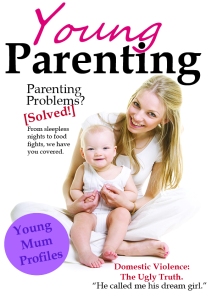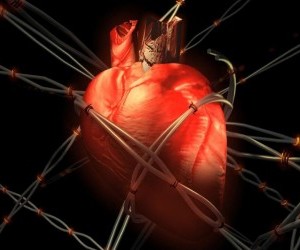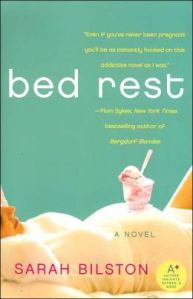I like to say that I don’t experience mother’s guilt* Recently, this has become dishonest of me.
I have no doubt in my ability to provide in all the practical areas; cooking healthy meals, and baking fun ones, providing seasonal footwear, extracurricular lessons and classes, teaching and loving; and, indeed, I experience no guilt whatsoever when it comes to my youngest daughter who, from the very beginning, has had an exceptionally easy going and compassionate personality.
No, I lay awake every night, worrying over and documenting the dozen of ways in which I am surely failing my oldest daughter. 
I became pregnant with her at age 17. It’s an old story. I spent the first month crying, but certain I would have her. I promptly quit smoking (I found out at 2 weeks pregnant so this habit hadn’t much of a chance to have a negative impact on her), quit coffee and all the hazardous foods like brie and egg yolk, refused to take any painkillers, and even avoided certain food colouring and additives. I have always been a well read individual who enjoys researching and immersing oneself in new experiences, and this is what I did with my pregnancy.
I will always recall the day I heard her heartbeat for the first time. I fell so instantly, and deeply, in love that my heart would be forever transformed. My tears over the pregnancy stopped after that. My pregnancy was a source of great joy for me, and I was very excitedly and impatiently awaiting her arrival (and boy, did she keep me waiting!)
Overall, I always felt I managed pregnancy well. The act of giving birth was done with as much ease as you could reasonably expect; my labour was 6 hours, complications were nonexistent (besides the minor nuisance of her being posterior), and I didn’t need pain relief until the last 40 minutes. We were very lucky.
The newborn stage was typical, but I never felt unnaturally out of my depth. The same could be said for the toddler years, and the kinder years, and even the first year of school.
It is only now, as she rapidly nears 8, that I am beginning to panic. She is such a clever, witty, snarky, mixed up little person. She is extremely sensitive and somewhat short on empathy (except where her little sister is concerned.) She has a number of sensory sensitivities (namely a dislike of loud, sudden noises; including crying, and warm temperatures; especially water.)
She is beginning to develop insecurities; a body consciousness of the sort I remember beginning to feel around that same age. She is an attractive child but, naturally, convinced she isn’t very pretty. I try to steer the emphasis away from her looks but, at the same time, I do tell her she looks lovely whenever she asks me. I want her to believe it, to feel it, but also to appreciate it doesn’t matter. But, of course, is that entirely true to the world? The emphasis on appearances is huge. Society certainly asserts that it does, in fact, matter. How do I begin to unravel these conundrums? How do I instill a deep sense of self worth that will save her from suffering through the same insecurities and doubts so many of us have?
She is mixed race; Chilean and English/Australian, and shows a deep respect and awe, and longing, for blue eyes and blonde hair. I try to stress that these features are not superior to her own, but she is disinclined to listen to me. Even more disturbing is the cultures surrounding her put such a strange emphasis on these features too- on both sides. I am close to certain they don’t do this intentionally. It’s in the hundreds of little comments they make, and the huge fuss made over blonde hair or blue eyes. I wonder where this obsession stems from; a leftover bias in the world from Nazi Germany, one might expect, but that seems quite an extreme connection to make.
My oldest daughter has ADHD. This diagnosis is still very new to us. I want to help her navigate this, and I long for her to reconnect with her true self; before her angry and extreme behaviours became the norm for our days.
We used to have a close and wonderful relationship. Lately it feels as if we are locked in an endless battle. Every day begins, and ends, with her screaming, and shouting string of expletives complete with rude hand gestures. Nothing I say or do makes much of an impact. No reward system works, and no disciplinary action proves effective. The only thing that works is to calm her down; insisting on quiet time with a book, a tight hug, or stroking her arm or back. It is my biggest fault as a mother that, exhausted from hours of her raging obstinance, I don’t always have the patience and I yell back.
I yell back too often.
As an example of what I am talking about; one morning, quite recently, she told me that I don’t deserve to live. Out of nowhere, for no particular reason (I had asked her to put her shoes on for school- but she was in full hyperactive mode due to an upcoming visit from her Grandma.) All of her friends mum’s are much cooler than me, she followed with. The last is quite a normal insult, the latter less so (but that she knows exactly how to hit home with her remarks underscores her intelligence. She understands.) Often I think that I must be failing her in some way if she is this angry and hurt. But where, and how? And how do I fix it?
I do not believe, as quite a number seem to about their own children with ADHD, that she is an Indigo child. I reject that nonsense. I don’t think that belief in it would prove particularly helpful, besides offering up a way for the both of us to further excuse difficult behaviour. I am determined to avoid being that parent in the park, or the checkout line, saying “I’m so sorry- she has ADHD.” I do not judge those parents at all, I understand completely how they feel and why they need to explain (the public tantrums and resulting stares are hard.) I want to try and teach my daughter how to navigate and manage her compulsions, rather than excuse them. In short, I am wary of teaching her to box herself in with the label. I want to respect the ways she is different, but I don’t want the diagnosis to be a cover she hides behind. It is a balancing act that is hard to get right. Sometimes I feel too harsh; at others, too lenient.
I want to get this right. I want her to feel good, be good, and do good. I wish I could be certain in my actions, and my decisions, but certainty is impossible. We take two small steps forward before doing a little leap backwards- and so it goes on.
I haven’t written this for praise, or reassurance. I’ve not written it as an invitation for your judgement. I simply want to join in the conversation. I am hoping parents in a similar situation, struggling to connect all the dots and sometimes uncertain, might read this and see that worry over the complexity of their task, and their doubts in regards to it, are okay. Understanding the depth of the little person in your life, and getting it right, isn’t always going to be easy.
I like to say that I don’t experience mother’s guilt but, the truth is, I remain amidst the ranks of mothers who lay awake at night; staring into the past and the future, and worrying over the many ways they’re too human to be a perfect parent.
*It’s always on the mother, eh? 🙄 But that’s a post for another time.












